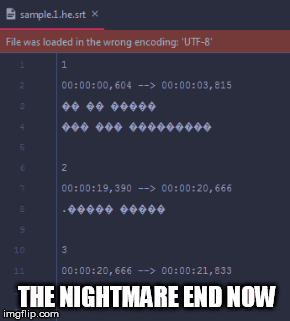Different approach of chardet, this library goal is to read human text from unknown encoding and transpose it to unicode the best we can.
Project description
Welcome to Charset for Human 👋
Library that help you read human* written text from unknown charset encoding.
Project motivated bychardet, I'm trying to resolve the issue by taking another approach.
This project offer you a alternative to Universal Charset Encoding Detector, also known as Chardet. Also as of July, August 2019 it's still experimental. Use it with caution.
| Feature | Chardet | Charset Normalizer |
|---|---|---|
Fast** |
✅ ⚡ |
❌ 🐌 |
Universal |
✅ | ✅ |
Reliable without distinguishable standards |
❌ | ✅ |
Reliable with distinguishable standards |
✅ | ✅ |
Free & Open |
✅ | ✅ |

Cats are going to enjoy newly decoded text
Chardet has weaknesses where Charset Normalizer has not and vice versa. You could combine the strength of both lib to reach near perfect detection. 💪
** : Fast when there is distinguishable standards. * : When written, should not be gibberish.
Your support
Please ⭐ this repository if this project helped you!
✨ Installation
Using PyPi
pip install charset_normalizer
🚀 Basic Usage
Just print out normalized text
from charset_normalizer import CharsetNormalizerMatches as CnM
matches = CnM.from_path('./my_subtitle.srt')
if len(matches) > 0:
print(
str(matches.best().first())
)
Convert any text file to UTF-8
from charset_normalizer import CharsetNormalizerMatches as CnM
try:
CnM.normalize('./my_subtitle.srt') # should write to disk my_subtitle-***.srt
except IOError as e:
print('Sadly, we are unable to perform charset normalization.', str(e))
See wiki for advanced usages. Todo, not yet available.
😇 Why
When I started using Chardet, I noticed that this library was wrong most of the time when it's not about Unicode, Gb or Big5. That because some charset are easily identifiable because of there standards and Chardet does a really good job at identifying them.
I don't care about the originating charset encoding, that because two different table can produce two identical file. What I want is to get readable text, the best I can.
In a way, I'm brute forcing text decoding. How cool is that ? 😎
🍰 How
- Discard all charset encoding table that could not fit the binary content.
- Measure chaos, or the mess once opened with a corresponding charset encoding.
- Extract matches with the lowest mess detected.
- Finally, if there is too much match left, we measure coherence.
Wait a minute, what is chaos/mess and coherence according to YOU ?
Chaos : I opened hundred of text files, written by humans, with the wrong encoding table. Then I observed, then I established some ground rules about what is obvious when it's seems like a mess. I know that my interpretation of what is chaotic is very subjective, feel free to contribute in order to improve or rewrite it.
Coherence : For each language there is on earth (the best we can), we have computed letter appearance occurrences ranked. So I thought that those intel are worth something here. So I use those records against decoded text to check if I can detect intelligent design.
👤 Contributing
Contributions, issues and feature requests are very much welcome.
Feel free to check issues page if you want to contribute.
📝 License
Copyright © 2019 Ahmed TAHRI @Ousret.
This project is MIT licensed.
Letter appearances frequencies used in this project © 2012 Denny Vrandečić
Project details
Release history Release notifications | RSS feed
Download files
Download the file for your platform. If you're not sure which to choose, learn more about installing packages.
Source Distribution
File details
Details for the file charset_normalizer-0.1a0.tar.gz.
File metadata
- Download URL: charset_normalizer-0.1a0.tar.gz
- Upload date:
- Size: 19.1 kB
- Tags: Source
- Uploaded using Trusted Publishing? No
- Uploaded via: twine/1.13.0 pkginfo/1.5.0.1 requests/2.22.0 setuptools/40.8.0 requests-toolbelt/0.9.1 tqdm/4.32.2 CPython/3.7.3
File hashes
| Algorithm | Hash digest | |
|---|---|---|
| SHA256 |
2e9474d6ea0730c9e6b691423823fcc0a012ab5281e4cf451d047ccca593e185
|
|
| MD5 |
fda35165d4cab813112ec19383271541
|
|
| BLAKE2b-256 |
7e8dfaa8cc13b03896e65dcd0f67d56ef70f4ee9c14301f5ac4540c8aaaaf1aa
|













